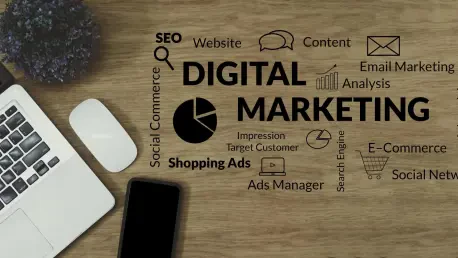The landscape of paid social media advertising has evolved into a complex arena where success is attainable only through strategic platform use and disciplined execution. Marketers often find themselves investing heavily in social ads, achieving minimal results that lead to frustration and reconsideration. Present-day conditions—marked by escalating ad costs, overcrowded platforms, and fluctuating algorithms—demand more innovative approaches to managing ad expenditure. The challenge now lies in selecting the right platforms, crafting compelling ads, and leveraging audience data intelligently to transform investments into tangible outcomes. Understanding how these elements interconnect can enhance the effectiveness of paid social campaigns and drive substantial returns.
1. Choosing the Right Platform
Selecting the appropriate platform for social ads is crucial, as it directly impacts targeting decisions and overall campaign success. Considering where the target audience spends most of their time and where they are most likely to engage with the brand is essential. Major social platforms offer distinct advantages for different goals. LinkedIn stands out for B2B targeting and reaching decision-makers, making it optimal for professional engagements. Instagram and TikTok, on the other hand, are ideal for brands that rely heavily on visual appeal and lifestyle promotion, particularly for video-centric campaigns. Facebook offers broad targeting options, fostering community engagement and increasing potential for retargeting. YouTube caters to video-driven strategies, offering excellent opportunities to showcase demos and educational content.
Ensuring alignment between platform choice and campaign objectives is fundamental. Begin by defining the target audience based on relevant characteristics such as job title, demographics, interests, and behavior, matching them to the platforms where engagement is most likely. It is vital to realistically assess budgeting constraints, as different platforms incur varying costs. For instance, while LinkedIn tends to be costlier per click, it may generate higher-quality leads. Experimenting with small pilots across several platforms allows marketers to monitor engagement, click-through rates, and cost per result, facilitating informed decisions about where to allocate resources effectively.
2. Refining Creative
Quality creative plays a pivotal role in capturing attention and fostering user engagement within paid social campaigns. Specific attributes define successful ads, including polished visuals, succinct messaging, and compelling calls to action. Creative must convey the brand’s value proposition clearly, emphasizing solutions to pain points and key benefits. Crisp images and professional design leave a lasting impression, driving users to act.
Incorporating emerging formats such as video ads, interactive carousels, user-generated content, and short-form reels can elevate engagement. Implementing small-scale tests and focusing on individual elements such as visuals, copy, and CTAs gives marketers insight into what influences audience behavior. The process begins with testing radically different messages or offers and gradually fine-tuning the details.
The necessity of keeping content fresh cannot be overstated, as ads lose momentum with excessive repetition. Frequent updates to visuals and copy ensure ongoing relevance and impact. Success in crafting ads does not stem from flamboyance but from precision, making clear connections with users and enhancing their experience, thereby optimizing campaign performance.
3. Leveraging Audience Data
Effective audience targeting supersedes superficial methodologies, leaning toward precision and depth of understanding. Lookalike audiences, for instance, enable platforms to identify users resembling the brand’s top customers, increasing the odds of engagement. Incorporating behavioral data allows for the creation of audiences based on actions such as website visits, video views, or engagement on social channels.
Retargeting warm leads—those who have previously interacted with the brand in various ways—is valuable for improved conversion rates. Feeding first-party data directly into the ad platform affords higher control and precision, as campaigns are tailored based on existing customer insights. Optimization tools provided by platforms like Meta Advantage+ and LinkedIn Campaign Manager can automate targeting, enhancing efficiency without continuous manual intervention.
Compliance with data protection regulations such as GDPR and CCPA remains imperative, ensuring legal adherence and responsible data handling. Experimenting with a diverse range of audience segments through A/B testing reveals high-performing groups and sharpens targeting strategies, optimizing campaign outcomes.
4. Budget Management and Performance Measurement
Approaching budget management with caution is vital in paid social advertising, as premature expenditure often leads to financial waste. Initiating campaigns with modest allocations—ranging from $500 to $2,000—allows for testing diverse audiences, creatives, and offers within industry-specific benchmarks, considering variances between sectors like B2B SaaS, e-commerce, or local businesses.
Scaling expenditures incrementally, by approximately 30-35% at a time, ensures algorithms adapt to changes seamlessly. Monitoring for diminishing returns is crucial; increases in cost per result or declines in click-through rates despite strategic adjustments may warrant pauses or revisions in campaign direction. It’s vital to allow platforms adequate time for recalibration post-budget modification to avoid premature adjustments.
Identifying key performance indicators like ROAS (Return on Ad Spend), CPA (Cost per Acquisition), CTR (Click-Through Rate), and conversion rates provides insight into campaign effectiveness. While metrics like reach, impressions, and likes are frequently considered, they should not overshadow those directly linked to sales or lead generation. Utilizing multi-touch attribution models offers a comprehensive view of how paid social influences the customer journey, facilitating informed decision-making.
5. Advanced Strategies for Enhanced ROI
Paid social functions optimally as a component of an integrated marketing approach, synergizing with other channels for amplified outcomes. Integrating paid social with channels like email marketing to nurture leads acquired through ads increases engagement and conversion, reinforcing campaign efforts. ABM (Account-Based Marketing) campaigns benefit from strategically placed paid ads, targeting high-value accounts and promoting depth in relationship building.
Retargeting accompanies email lists, reinforcing offers and broadening reach, optimizing the impact of existing marketing efforts. Applying frequency capping prevents ad saturation, maintaining audience engagement without annoyance. Regularly refreshing creative strategies—aspects of format, visual, or offers—preserves momentum, ensuring the campaign remains compelling.
Coordinated cross-channel marketing enhances technological ROI because it sustains audience involvement across platforms, eliminating gaps or dead ends in user experience. When each facet of the marketing ecosystem functions harmoniously, individual channel performance improves, culminating in greater overall success.
Optimizing Future Paid Social ROI
The landscape of paid social media advertising has metamorphosed into a complex domain where achieving success demands strategic platform usage and disciplined execution. Marketers are often caught in the cycle of extensive investments in social ads, only to see marginal gains, fostering frustration and reevaluation of tactics. The current arena— influenced by rising ad costs, crowded platforms, and variable algorithms—calls for more innovative methods in managing ad spending. Today, the true challenge is identifying the most effective platforms, crafting persuasive advertisements, and astutely utilizing audience data to convert investments into meaningful results. Understanding the interplay of these components not only boosts the effectiveness of paid social campaigns but also generates significant returns. By mastering these elements, marketers can unlock the full potential of their advertising budgets, setting the stage for sustainable success in the competitive digital marketplace.









